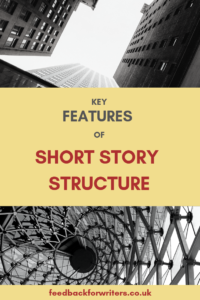Fiction writers and screenwriters; totally different animals, right?
 Screenwriters and fiction authors. One group writing to meet the often harsh demands of the film and TV industries, the other striving to create Booker-winning literary masterpieces. Different markets and forms, different audience. In other words – with about as much in common as cats and dogs. Or so you might think. What could one group of writers possibly have to teach the other?
Screenwriters and fiction authors. One group writing to meet the often harsh demands of the film and TV industries, the other striving to create Booker-winning literary masterpieces. Different markets and forms, different audience. In other words – with about as much in common as cats and dogs. Or so you might think. What could one group of writers possibly have to teach the other?
Different Forms, Different Requirements
The difference in form certainly makes an impact on focus. Since film is a visual medium, screenwriters deal primarily in visual imagery and dialogue. This is then translated onto screen and into the final creation by directors and actors. Fiction writers, however, get to invoke all five senses in the imagination of the reader, using just words on a page. Because it is relatively free-form, fiction also has far more structural possibilities. Prose fiction allows, I think, for much more playfulness and a wider range of styles when telling a story.
So what’s the problem? Is there one?
Having worked in both forms, I was very surprised when I came to fiction groups, books, and classes and realised few of us seemed to be being taught the basics of Story and Story Structure. Or not in the way that most screenwriters would view as pretty fundamental. There is nothing about writing prose that should mean the story is less important than it would be in a script. But in the fiction-writing world, there seems to be an over-reliance on the idea that once you have the characters and a few scenes, structure and story will just magically emerge by itself. As if even talking about it will destroy some sort of mystique.
I’m not sure why that is.
Maybe it’s arisen out of a certain snobbery about books versus films.. Indeed, choosing your “genre” is far more of a necessity in film which I guess aligns it in many people’s minds with commercial fiction.
Perhaps it is a misunderstanding of the distinction between Plot – the series of events that happen in a story – and Story itself. In other words, the combination of multiple elements to create a complete piece that is meaningful and says what we want it to say. That the art of something as ethereal and poetic as “literary” fiction could not possibly be subject to the more workaday structural approach screenwriters take to achieve this.
And yes, I have noticed this cultural difference between working fiction writers and screenwriters many times in person. I’ve often found it frustrating that tools that could be made available to budding fiction authors rarely seem to be, and that they’re essentially left to muddle through alone.
5 Things Fiction Writers Can Learn From Screenwriters
 1. It’s All About The STORY
1. It’s All About The STORY
I get why sometimes the kinds of “systems” advocated by some of the screenwriting gurus can seem frustratingly restrictive, dictatorial and “uncreative”. I get that overanalysis, overplanning and picking work apart can sometimes be destructive to creative flow. And I get the fear of producing generic work, or a seeming over-reliance on plot over character – although, as I said above, I don’t believe that “Plot” is what “Story” is all about.
Here’s the thing. I’ve seen far more instances where a greater understanding of overall story and the elements that pull them togethe would have been useful for the prose writer. I believe that whichever form you choose to write in, you are using it primarily for the purpose of conveying meaning to your reader or audience. And that, for me, is what “Story” is all about. I’m unsure how new writers are meant to create great stories without getting to grips with ways to build them and the materials needed to do so. For screenwriters, Story is everything. Its principles tend to be taught and discussed quite overtly. This is rarely the case with fiction writing. Everything I’ve learned about the fundamentals of story, I’ve learned from screenwriting. And screenwriting teaching is streets ahead on this front.
(If you’re interested in learning more, you might want to check out my review of screenwriting guru John Truby’s Anatomy of Story here)
2. Tell A Story in Scenes
Remember “show, don’t tell”? That basic rule we’re all told to abide by in fiction-writing? Screenwriters have it way easier than fiction writers in this respect. The restrictions of the form means they can’t do anything else. Unless they make extensive use of voiceover (not cool), what they write is what the audience will see and hear. Visuals. Dialogue. And when you think that way, it’s easier to start thinking about what scenes you’ll need to use to get your characters and story across.
When you’re writing fiction, how easy is it to slip into an authorial narrative voice? Telling us for paragraph after paragraph about a character’s history and so on. Now imagine you no longer have that option. If you were writing this character for the screen, if you were going to move this part of their story along, what scenes would you use to show it?
You’ll often find thinking this way forces you into a more effective method of conveying what you want to say.
3. Structure Is Not A Dirty Word…
In fact, it’s crucial. Structure is the foundation on which the successful telling of the story rests. Your building blocks. The way you choose to structure a piece of writing feeds directly into how well you are able to convey your story’s meaning. Rather like someone building their own home – it helps to know what you’re doing. An understanding of what story structure is and does, rather than just bumbling along blindly hoping it will work, can make the process of writing a lot easier
That isn’t to say that there is only one structure possible. Not all will stories follow the classic Three Act Structure, at least not overtly. That said, I find it is often helpful to understand such a longstanding structural form and its rules and conventions before you try to break them. Sometimes it helps to know what works and why or why not, and Three-Act is a classic dramatic structure for a reason. You will often also find that even those who encourage the breaking of the old Three-Act stranglehold recognise the debt their structural analyses owe to classical structural forms.
I think fiction writers have far more options in terms of overt structures to play with than screenwriters. But it’s important that you have a grasp of the basic principles that underly these. If a key structural element is missing from your story, you will often find that the story as a whole fails as a result.
4. …And Neither Is Genre
Which is not to say that all stories have to be old-school generic, or even plot-driven, which I suspect is at the heart of much snobbery about any discussion at all of genre and its many forms.
But if you think that, say, literary fiction isn’t a “genre” of sorts, with its own conventions and expectations (and no-no’s), then you are very much mistaken. It is true that commercial fiction tends more towards the old-school genre conventions used by the film industry, and that publishers often reflect that in their marketing. But that isn’t the complete picture. (See my more detailed post Genre and Why It Matters here.)
Genre isn’t just the old-school categories. It’s more about the fundamentals of type of story – the expectations of the reader,the reasons you are telling it, the tone, whether something “fits” or not, even if the writer is consciously using a specific genre to subvert expectations. You’d be surprised at just how often I’ve fed back on a draft story that doesn’t “work” precisely because there are significant issues in the story with the muddling of genres. Or the writer doesn’t quite seem to have control of the type of story they are telling or a grasp on its conventions. Genre in its widest sense, is about “the type of story you want to tell” and why. A clear understanding of genre and the purposes and history of different types of story can be a powerful tool.
5. Writing Is Not Some Mystical Thing. It’s Work.
If I had a pound for every time someone has inferred to me that Fiction Writing is somehow analogous to Relaxation, I’d be a rich woman. It’s not a hobby , it’s not painting watercolours, and frankly, if I want relaxing Me-Time, I’ll go to a spa or just run myself a bubble bath or something.
I’d certainly agree that creativity and the act of being creative is pleasurable, can be profoundly satisfying. And that sometimes we make it harder for ourselves than it needs to be. But creating a satisfying piece of work, telling the story we want to tell in a way that others will want to read, is not all lounging around in scarves on chaise-longues, being poetic and getting some minion to feed us grapes, I can assure you.
If you want to finish your short story, or publish your novel, you’re going to have to work at it. Exercise some discipline to get it done. This can be a long hard slog, especially on longer projects.
A lot of people dream of writing a book; far more, I suspect than those who dream of writing a screenplay. It’s always one of the top fantasies, isn’t it? Yet very few achieve it. Why? Because ultimately, it’s such hard work, that’s why. Drafting, editing, painstakingly rewriting, over months or even years. Many screenwriters I know, including those who are budding, seem to take a far more pragmatic approach to their writing than those who just dream of being fiction writers. This is possibly because those who dream of screenwriting tend to be closer to the realities of the industry – they know people, they get involved, get their hands dirty. I think as fiction writers, we have to be prepared to do the same.
So what are your thoughts? Have I missed anything off my list? Are the forms so different that they can never meet? Feel free to leave any thoughts and comments below.



 Screenwriters and fiction authors. One group writing to meet the often harsh demands of the film and TV industries, the other striving to create Booker-winning literary masterpieces. Different markets and forms, different audience. In other words – with about as much in common as cats and dogs. Or so you might think. What could one group of writers possibly have to teach the other?
Screenwriters and fiction authors. One group writing to meet the often harsh demands of the film and TV industries, the other striving to create Booker-winning literary masterpieces. Different markets and forms, different audience. In other words – with about as much in common as cats and dogs. Or so you might think. What could one group of writers possibly have to teach the other? 1. It’s All About The STORY
1. It’s All About The STORY